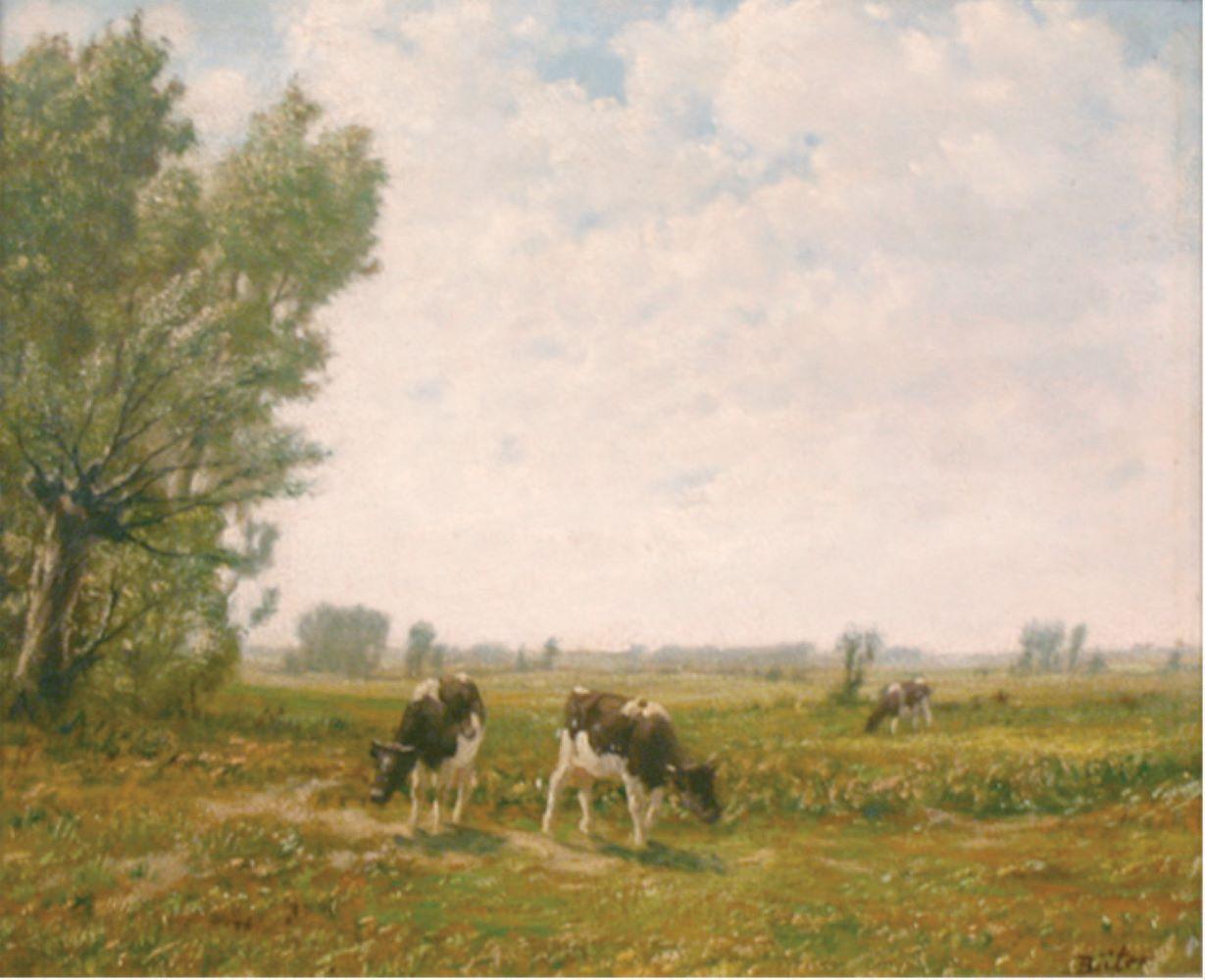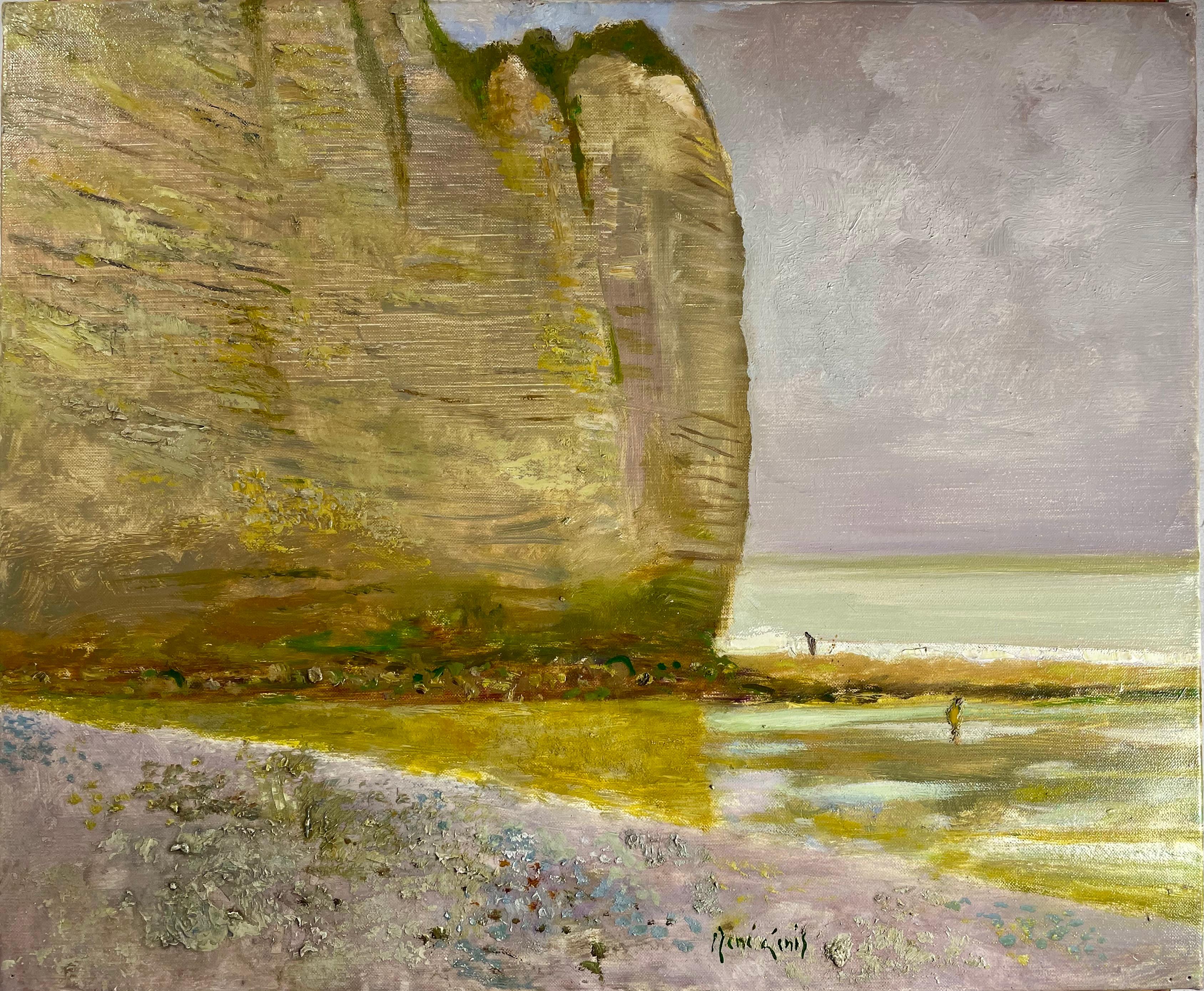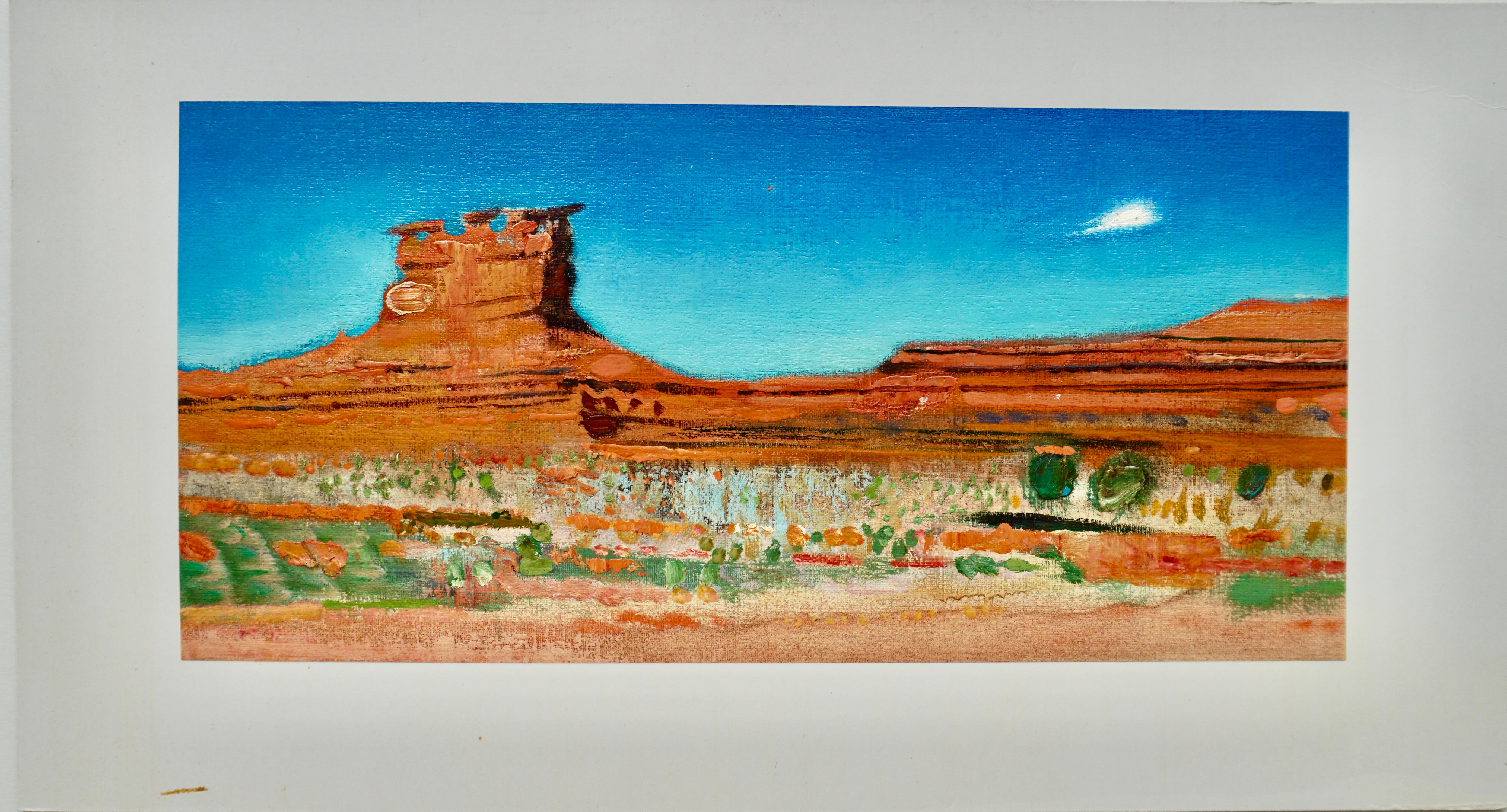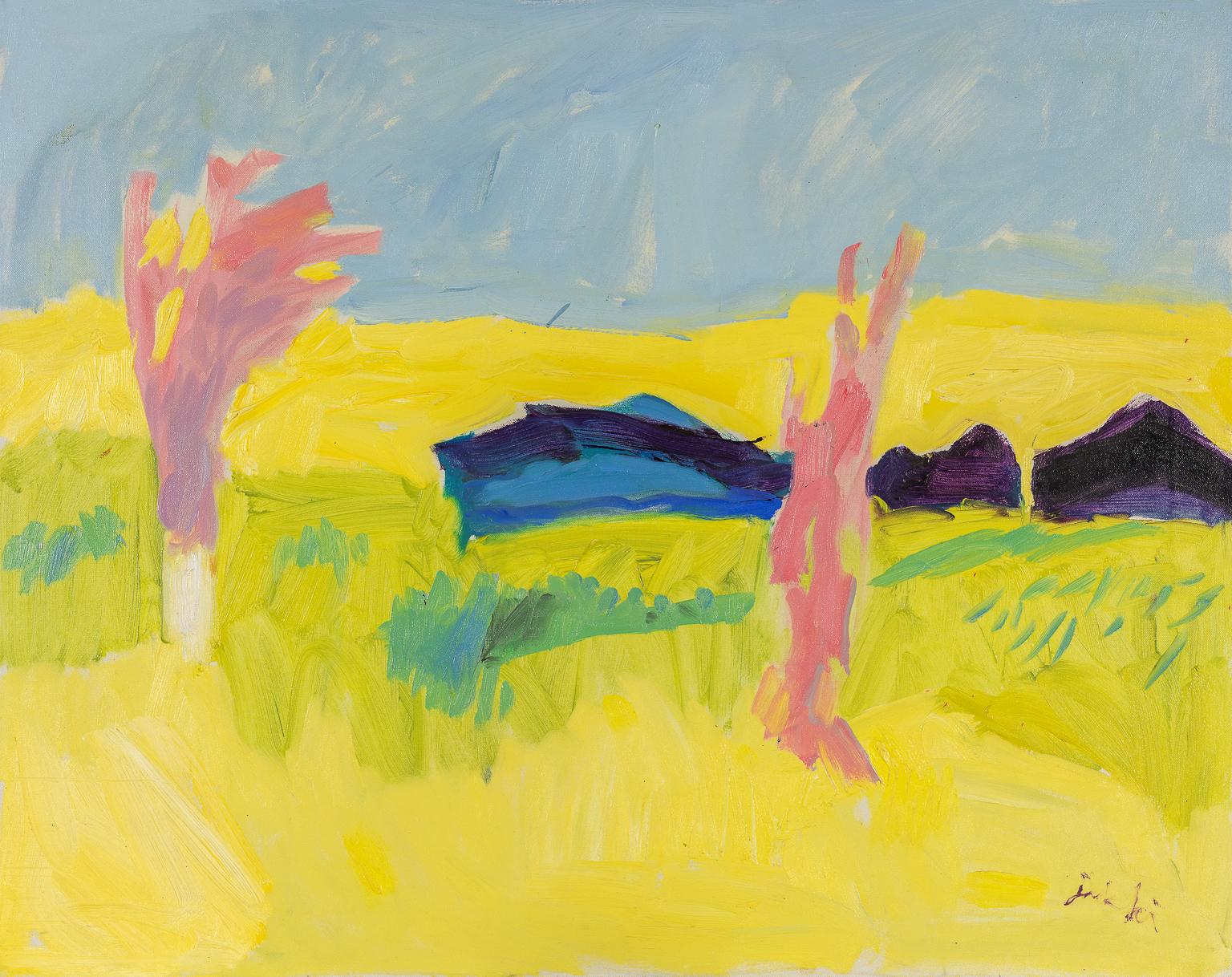Items Similar to Le vieux pont, Brantôme, Dordogne by Paulémile Pissarro - Painting, Landscape
Want more images or videos?
Request additional images or videos from the seller
1 of 11
Paul Emile PissarroLe vieux pont, Brantôme, Dordogne by Paulémile Pissarro - Painting, Landscape1918
1918
About the Item
Le vieux pont, Brantôme, Dordogne by Paulémile Pissarro (1884-1972)
Oil on canvas
54 x 65 cm (21 ¹/₄ x 25 ⁵/₈ inches)
Signed and titled lower left, Paulémile- Pissarro. 1918.
An extremely rare early post-impressionist work from a period we seldom come by.
This work is accompanied by a certificate of authenticity by Lélia Pissarro and will be included in the forthcoming catalogue raisonné.
Artist biography:
Paulémile Pissarro, Camille Pissarro’s youngest son, was born in Éragny in 1884 where he was brought up within the creatively fertile environment of his family home and, encouraged by his father, began drawing at an early age. Paulémile’s godfather was Claude Monet, who became his teacher and legal guardian after Camille’s death in 1903.
In 1905 Paulémile exhibited at the Salon des Indépendants for the first time. Although his father had supported Paulémile’s desire to be an artist, his mother was eager for him to learn a more practical trade. Therefore in 1908 he put aside his artistic pursuits to work as an automobile mechanic and test-driver, then later as a lace and textile designer, allowing him only a limited time to paint. Paulémile only fully dedicated himself to painting following a letter from his brother Lucien in London, who wrote to invite him to take part in an exhibition held in London. Subsequent to the successful sale of a number of watercolours he had sent over, the young artist became inspired to leave the textile factory and pursue a career in art.
By the 1920s Paulémile had become an established Post-Impressionist artist in his own right, spending the summer months escaping from Paris on painting trips with fellow artists Kees Van Dongen, Raoul Dufy, Maurice de Vlaminck and André Dunoyer de Segonzac. In 1922 Paulémile purchased a house in Lyons-la-Forêt, a small village within the region of his hometown of Éragny and Giverny, where he moved in with his first wife Berthe Bennaiche. During this time, he developed a form of Cubism inspired by Paul Cézanne whom he dearly admired, creating some wonderful paintings of the river Eure and its surrounding villages. There he formed a close friendship with his neighbour, the famous Art Deco designer Émile-Jacques Ruhlmann, who designed a stunning Art Deco studio for Paulémile adjacent to his house.
In 1930 he visited and fell in love with the Swiss Normandy area in the Calvados region, in particular the River Orne which runs through the valley adjacent to the villages of Clécy and St. Remy. The combination of rolling hills, bold meadows and the calm river weaving its way through the landscape offered Paulémile a new burst of inspiration. With his second wife Yvonne Beaupel, Paulémile eventually moved to Clécy in 1935, where he would remain for the rest of his life. Of their three children, both H. Claude and Yvon also became artists.
With his house backing on to the river Orne, Paulémile developed a new way of working using a boat as a floating studio, where he spent countless days painting the calm waters from between the riverbanks. Here the influence of his godfather Claude Monet became apparent, particularly in Paulémile’s depiction of water, which was revolutionised by the Impressionist icon. He also applied Monet’s lessons in horticulture to the creation of an abundant garden, offering him many more motifs for his new paintings. Alongside these river landscapes, he also painted the neighbouring hay fields, various snow scenes, some interiors and still lives. The most ambitious work in his oeuvre was a fresco painted on all four walls of his own dining room, depicting the adjacent river in which he includes family members, neighbours and friends.
In 1967 Paulémile had his first one-man show in the United States at Wally Findlay Galleries in New York. This led to widespread recognition and a degree of professional success that few Pissarro artists knew during their lifetime. Since his death in 1972, Paulémile remains one of the best known of Camille’s sons.
- Creator:Paul Emile Pissarro (1884-1972, French)
- Creation Year:1918
- Dimensions:Height: 21.26 in (54 cm)Width: 25.6 in (65 cm)
- Medium:
- Period:
- Condition:
- Gallery Location:London, GB
- Reference Number:1stDibs: LU261214062912
About the Seller
5.0
Recognized Seller
These prestigious sellers are industry leaders and represent the highest echelon for item quality and design.
Platinum Seller
These expertly vetted sellers are 1stDibs' most experienced sellers and are rated highest by our customers.
Established in 1964
1stDibs seller since 2015
95 sales on 1stDibs
Typical response time: 4 hours
Associations
Society Of London Art Dealers
- ShippingRetrieving quote...Ships From: London, United Kingdom
- Return PolicyA return for this item may be initiated within 7 days of delivery.
More From This SellerView All
- Marée Basse - Arromanches by Hugues Pissarro dit Pomié - Landscape paintingBy Hughes Claude PissarroLocated in London, GB*UK BUYERS WILL PAY AN ADDITIONAL 20% VAT ON TOP OF THE ABOVE PRICE Marée Basse - Arromanches by Hugues Pissarro dit Pomié (b. 1935) Oil on canvas 65 x 54 cm (2 5⅝ x 21 ¼ inches) Si...Category
Early 2000s Contemporary Figurative Paintings
MaterialsCanvas, Oil
- Chemin de la Vallée, Oil on Canvas by Paulémile PissarroLocated in London, GBChemin de la Vallée by Paulémile Pissarro (1884 - 1972) Oil on canvas 46 x 61 cm (18 ¹/₈ x 24 inches) Signed lower left, Paulémile. Pissarro- Signed and titled on the reverse Pro...Category
Mid-20th Century Post-Impressionist Landscape Paintings
MaterialsOil, Canvas
- Jerusalem by Ludwig Blum, landscape painting, figurative artBy Ludwig BlumLocated in London, GBJerusalem by Ludwig Blum Oil on canvas 18 x 28.7 inches / 45.7 x 73cm Signed Painted circa 1955Category
1950s Naturalistic Landscape Paintings
MaterialsOil, Canvas
- Femmes Maroccaines by Marcel Dyf - River scene paintingBy Marcel DyfLocated in London, GBFemmes Maroccaines by Marcel Dyf (1899-1985) Oil on canvas 60.5 x 73 cm (23 ⁷/₈ x 28 ³/₄ inches) Signed lower left, Dyf 1957Category
1950s Post-Impressionist Landscape Paintings
MaterialsCanvas, Oil
- Le Coup de Vent by Paulémile Pissarro - Post-Impressionist oil river sceneBy Paul Emile PissarroLocated in London, GBLe Coup de Vent by Paulémile Pissarro (1884-1972) Oil on canvas 65 x 92 cm (25⁵/₈ x 36¹/₄ inches) Signed lower left, Paulémile Pissarro; signed and titled on the reverse Executed cir...Category
1940s Post-Impressionist Landscape Paintings
MaterialsCanvas, Oil
- La Mare et les Vieux Saules by Paulémile Pissarro, Post-Impressionist riverscapeBy Paul Emile PissarroLocated in London, GB*UK BUYERS WILL PAY AN ADDITIONAL 5% IMPORT DUTY ON TOP OF THE ABOVE PRICE La Mare et les Vieux Saules by Paulémile Pissarro (1884-1972) Oil on canvas 46 x 55 cm (18 ¹/₈ x 21 ⁵/₈ i...Category
1930s Post-Impressionist Landscape Paintings
MaterialsCanvas, Oil
You May Also Like
- Bernhard ButerLocated in Saint Augustine, FLArtist: Bernhard Buter (1883-1959) German Title: Rhinish Landscape Medium: Oil on Canvas Dimensions: Framed 19” x 21” , Unframed 11 x 13” Bernhard Buter paints agrarian landscapes i...Category
Early 20th Century Realist Landscape Paintings
MaterialsCanvas, Oil
- "Les Falaise Normande" (The Cliffs Of Normand)By René GenisLocated in Berlin, MDRene Genis (French 1922-2004) “Les Falaise Normande” / The Cliffs of Normand. A sea scape with high cliffs, the beach, and two fishermen. The cliffs are in browns, tans and olives a...Category
1990s French School Landscape Paintings
MaterialsCanvas, Oil
- "Monument Valley"By René GenisLocated in Berlin, MDRene Genis (French 1922-2004) Monument Valley. 1967. Beautiful oranges, browns, greens against a turquoise blue sky. Oil on canvas, laid on mat. Si...Category
Mid-20th Century Landscape Paintings
MaterialsOil, Canvas
- Early oil depicting the Great Fire of LondonLocated in London, GBThe Great Fire of London in September 1666 was one of the greatest disasters in the city’s history. The City, with its wooden houses crowded together in narrow streets, was a natural fire risk, and predictions that London would burn down became a shocking reality. The fire began in a bakery in Pudding Lane, an area near the Thames teeming with warehouses and shops full of flammable materials, such as timber, oil, coal, pitch and turpentine. Inevitably the fire spread rapidly from this area into the City. Our painting depicts the impact of the fire on those who were caught in it and creates a very dramatic impression of what the fire was like. Closer inspection reveals a scene of chaos and panic with people running out of the gates. It shows Cripplegate in the north of the City, with St Giles without Cripplegate to its left, in flames (on the site of the present day Barbican). The painting probably represents the fire on the night of Tuesday 4 September, when four-fifths of the City was burning at once, including St Paul's Cathedral. Old St Paul’s can be seen to the right of the canvas, the medieval church with its thick stone walls, was considered a place of safety, but the building was covered in wooden scaffolding as it was in the midst of being restored by the then little known architect, Christopher Wren and caught fire. Our painting seems to depict a specific moment on the Tuesday night when the lead on St Paul’s caught fire and, as the diarist John Evelyn described: ‘the stones of Paul’s flew like grenades, the melting lead running down the streets in a stream and the very pavements glowing with the firey redness, so as no horse, nor man, was able to tread on them.’ Although the loss of life was minimal, some accounts record only sixteen perished, the magnitude of the property loss was shocking – some four hundred and thirty acres, about eighty per cent of the City proper was destroyed, including over thirteen thousand houses, eighty-nine churches, and fifty-two Guild Halls. Thousands were homeless and financially ruined. The Great Fire, and the subsequent fire of 1676, which destroyed over six hundred houses south of the Thames, changed the appearance of London forever. The one constructive outcome of the Great Fire was that the plague, which had devastated the population of London since 1665, diminished greatly, due to the mass death of the plague-carrying rats in the blaze. The fire was widely reported in eyewitness accounts, newspapers, letters and diaries. Samuel Pepys recorded climbing the steeple of Barking Church from which he viewed the destroyed City: ‘the saddest sight of desolation that I ever saw.’ There was an official enquiry into the causes of the fire, petitions to the King and Lord Mayor to rebuild, new legislation and building Acts. Naturally, the fire became a dramatic and extremely popular subject for painters and engravers. A group of works relatively closely related to the present picture have been traditionally ascribed to Jan Griffier...Category
17th Century Old Masters Landscape Paintings
MaterialsOil, Canvas
- Autumn Landscape with PurpleBy Zygmund JankowskiLocated in Gloucester, MAZygmund Jankowski (1925–2009) painted traditional subjects with exuberant irreverence for traditional rules of color, composition, and perspective. He disparaged imitation and deligh...Category
1980s Contemporary Landscape Paintings
MaterialsCanvas, Oil
- Flat Ledge Quarry with Golden TreesLocated in Gloucester, MAFlat Ledge Quarry is one of the many granite quarries in Rockport MA, which actively produced granite for cobblestones until the early 20th century, when asphault became the preferre...Category
2010s Contemporary Landscape Paintings
MaterialsCanvas, Oil





